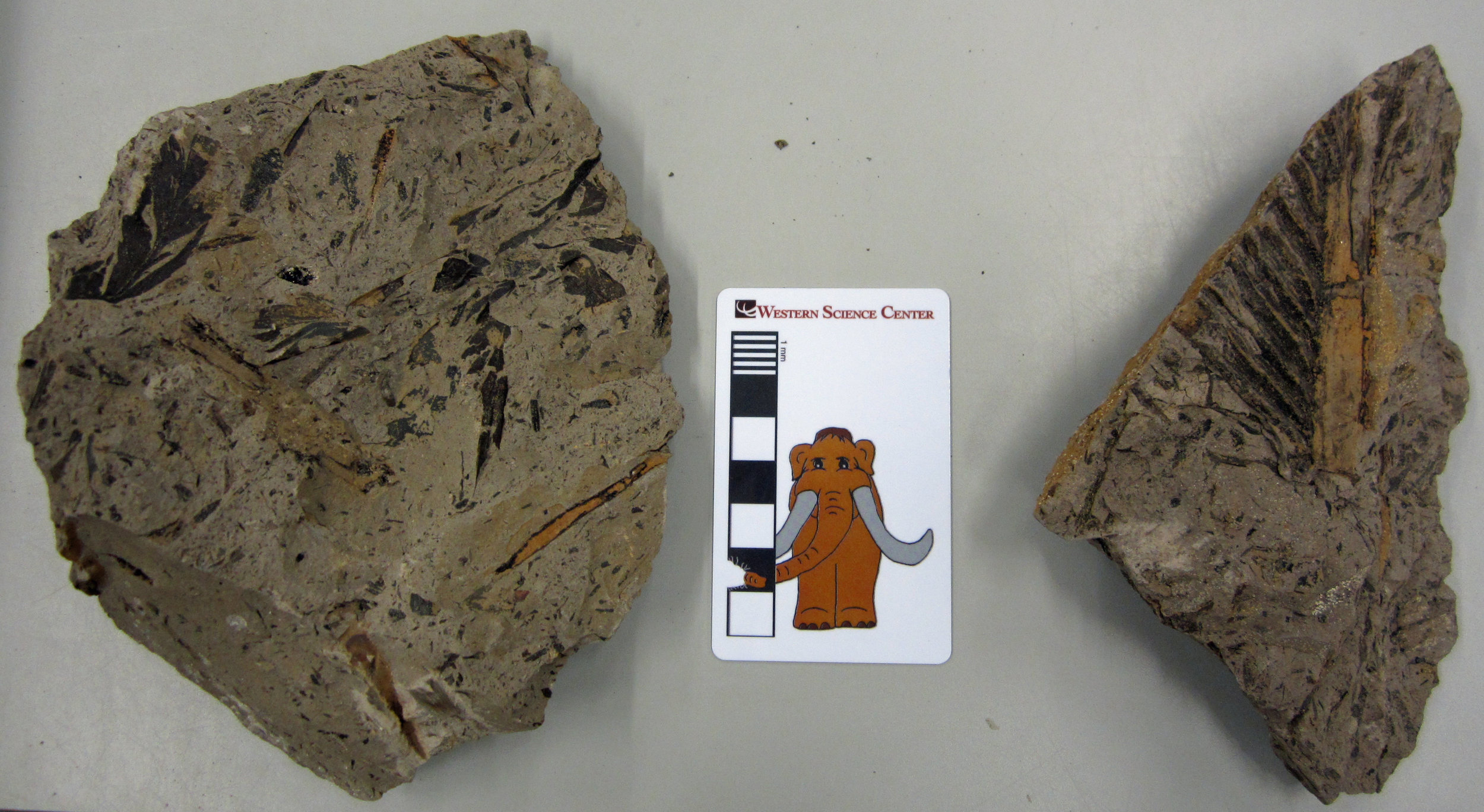 I just returned from 18 days of field work in the Upper Cretaceous Menefee Formation of New Mexico.A team of staff and volunteers from Western Science Center, Zuni Dinosaur Institute for Geosciences, and Southwest Paleontological Society collected over half a ton of fossils, including dinosaurs, crocodiles, and turtles. All these fossils will be prepped, curated, and studied at Western Science Center over the next few years.While digging through the hard mudstone layers of the Menefee Formation, we invariably encounter abundant plant fossils. Most of these consist of shards of stems and leaves, but many others should be identifiable. In this image are two pieces of mudstone collected at one of our dinosaur quarries. The piece on the left is covered in fragments of stems and leaves, with a more complete leaf in the upper left corner. On the right is a slice of mudstone with part of a palm leaf preserved.Fossil plants are an integral part of reconstructing and imagining ancient ecosystems. Analysis of plant fossils such as these will help reveal what the climate, environment, and ecology of the Menefee Formation were like 80 million years ago.Post by Curator Dr. Andrew T. McDonald.
I just returned from 18 days of field work in the Upper Cretaceous Menefee Formation of New Mexico.A team of staff and volunteers from Western Science Center, Zuni Dinosaur Institute for Geosciences, and Southwest Paleontological Society collected over half a ton of fossils, including dinosaurs, crocodiles, and turtles. All these fossils will be prepped, curated, and studied at Western Science Center over the next few years.While digging through the hard mudstone layers of the Menefee Formation, we invariably encounter abundant plant fossils. Most of these consist of shards of stems and leaves, but many others should be identifiable. In this image are two pieces of mudstone collected at one of our dinosaur quarries. The piece on the left is covered in fragments of stems and leaves, with a more complete leaf in the upper left corner. On the right is a slice of mudstone with part of a palm leaf preserved.Fossil plants are an integral part of reconstructing and imagining ancient ecosystems. Analysis of plant fossils such as these will help reveal what the climate, environment, and ecology of the Menefee Formation were like 80 million years ago.Post by Curator Dr. Andrew T. McDonald.
